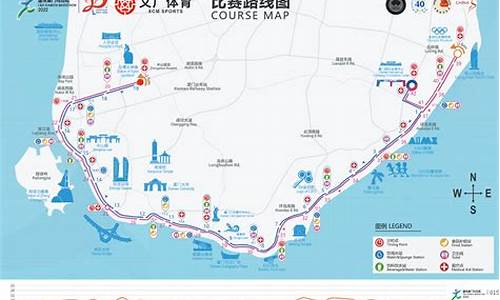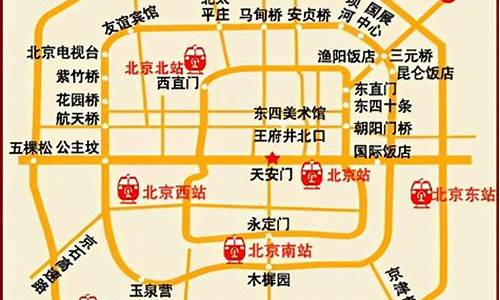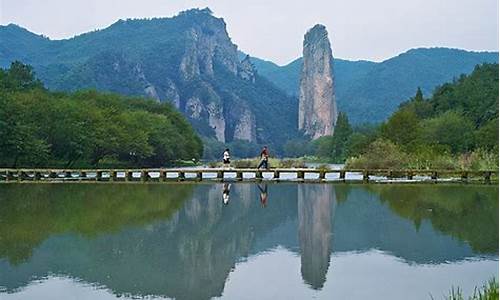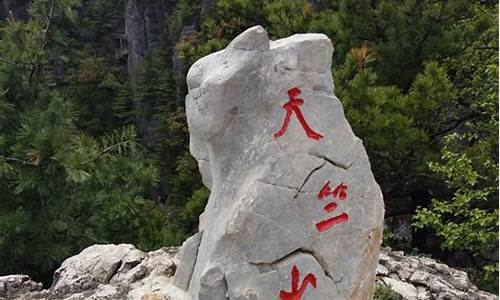遗址公园英语,遗址公园英语怎么读

1.需要中国名胜古迹(中文和英文)
The Great Wall 长城 Mount Taishan 泰山 Imperial Palace of the Ming and Qing Dynasties,Mogao Caves 敦煌莫高窟 The Mausoleum of the First Qin Emporer 秦始皇陵兵马俑坑 Peking man Site at Zhoukoudian 周口店北京人遗址 Mount Huangshan 黄山 Jiuzhaigou Valley Scenic and Historic Interest Area 九寨沟风景名胜区 The Mountain Resort in Chengde City 避暑山庄及周围寺庙 Potala Palace, Lhasa *** 布达拉宫 Lushan National Park 庐山风景名胜区 Mt。
Emei Scenic Area, including Leshan Giant Buddha Scenic Area 峨眉山--乐山大佛 Ancient City of Ping Yao 平遥古城 Summer Palace in Beijing 北京颐和园 Forbidden City in Beijing 北京故宫 Temple of Heaven--an Imperial Sacreficial Altar in Beijing 天坛。
2.中国名胜古迹英文介绍The Great Wall
The Great Wall runs across North China like a huge dragon, It winds its way from west to east, across deserts, over mountains, through valleys till at last it reaches the sea. It's the longest wall on the earth, also one of the wonders in the world.
The Great Wall has a history of more than 2000 years. The first part was built during the Spring and Autumn Period. All the walls were joined up in Qin Dynasty.All tile work was done by hand. Thousands of people died while building the wall.Thus the Great Wall came into existence.
Since then, it has been rebuilt and repaired many times. Now the Great Wall,the admiration of the world, has taken on a new look. It's visited by large numbers of people from all parts'of the'country and the world.
长城
长城,像一条巨龙横亘华北地区,它穿过沙漠,越过高山,跨过山谷,由西到东蜿蜒曲折,最后到达大海。它是地球上最长的墙,也是世界奇迹之子。
长城有2000多年的历史。它开始修建于春秋时期。秦朝时,所有的城墙联结在一起。所有工作都是用手完成的,成千上万的人在修建长城时死去。长城就是这样出现的。
目前为止,长城重修多次。现在的长城面貌一新,迎接来角全国和全世界各地的游客。
3.名胜古迹的英文名胜古迹[míng shèng gǔ jī]
places of historic interest and scenic beauty; famous historic and cultural sites; famous places of interest and relics of olden times; places of historic interest
1.在北京有很多著名的景点和名胜古迹。
There're many famous scenic spots and historical sites in Beijing.
danci.911cha
2.20世纪30年代,全国名胜古迹托管协会开始行动起来拯救英国面临威胁的文物级乡村宅第。
In the 1930's, The National Trust began its campaign to save Britain's patrimony of threatened country houses.
4.中国名胜古迹简介(英文版)the Palace Museum What strikes one first in a bird's -eye view of Beijing proper is a vast tract of golden roofs flashing brilliantly in the sun with purple walls occasionally emerging amid them and a stretch of luxuriant tree leaves flanking on each side. That is the former Imperial Palace, popularly known as the Forbidden City, from which twenty-four emperors of the Ming and Qing Dynasties ruled China for some 500 years--from1420 to 1911. The Ming Emperor Yong Le, who usurped the throne from his nephew and made Beijing the capital, ordered its construction, on which approximately 10,000 artists and a million workmen toiled for 14 years from 1406 to 1420. At present, the Palace is an elaborate museum that presents the largest and most plete ensemble of traditional architecture plex and more than 900,000 pieces of court treasures in all dynasties in China. Located in the center of Beijing, the entire palace area, rectangular in shape and 72 hectares in size, is surrounded by walls ten meters high and a moat 52 meters wide. At each corner of the wall stands a watchtower with a double-eave roof covered with yellow glazed tiles. The main buildings, the six great halls, one following the other, are set facing south along the central north-south axis from the Meridian Gate, the south entrance, to Shenwumen, the great gate piercing in the north wall. On either side of the palace are many paratively *** all buildings. Symmetrically in the northeastern section lie the six Eastern Palaces and in the northwestern section the six Western Palaces. The Palace area is divided into two parts: the Outer Court and the Inner Palace. The former consists of the first three main halls, where the emperor received his courtiers and conducted grand ceremonies, while the l。
5.中国名胜古迹简介(英文版)the Palace Museum What strikes one first in a bird's -eye view of Beijing proper is a vast tract of golden roofs flashing brilliantly in the sun with purple walls occasionally emerging amid them and a stretch of luxuriant tree leaves flanking on each side. That is the former Imperial Palace, popularly known as the Forbidden City, from which twenty-four emperors of the Ming and Qing Dynasties ruled China for some 500 years--from1420 to 1911. The Ming Emperor Yong Le, who usurped the throne from his nephew and made Beijing the capital, ordered its construction, on which approximately 10,000 artists and a million workmen toiled for 14 years from 1406 to 1420. At present, the Palace is an elaborate museum that presents the largest and most plete ensemble of traditional architecture plex and more than 900,000 pieces of court treasures in all dynasties in China. Located in the center of Beijing, the entire palace area, rectangular in shape and 72 hectares in size, is surrounded by walls ten meters high and a moat 52 meters wide. At each corner of the wall stands a watchtower with a double-eave roof covered with yellow glazed tiles. The main buildings, the six great halls, one following the other, are set facing south along the central north-south axis from the Meridian Gate, the south entrance, to Shenwumen, the great gate piercing in the north wall. On either side of the palace are many paratively *** all buildings. Symmetrically in the northeastern section lie the six Eastern Palaces and in the northwestern section the six Western Palaces. The Palace area is divided into two parts: the Outer Court and the Inner Palace. The former consists of the first three main halls, where the emperor received his courtiers and conducted grand ceremonies, while the latter was the living quarters for the imperial residence. At the rear of the Inner Palace is the Imperial Garden where the emperor and his family sought recreation. The main entrance to the Palace is the Meridian Gate(1), which was so named because the emperor considered himself the "Son of the Heaven" and the Palace the center of the universe, hence the north-south axis as the Meridian line going right through the Palace. The gate is crowned with five towers, monly known as the Five-Phoenix Towers(2), which were installed with drums and bells. When the emperor went to the Temple of Heaven, bells were struck to mark this important occasion. When he went to the Ancestral Temple, it was the drums that were beaten to publicize the event. Beyond the Meridian Gate unfolds a vast courtyard across which the Inner Golden Water River runs from east to west. The river is spanned by five bridges, which were supposed to be symbols of the five virtues preached by Confucius--benevolence, righteousness, rites, intelligence, and fidelity(3). At the north end of the courtyard is a three-tiered white marble terrace, seven meters above the ground, on which, one after another, stand three majestic halls; the Hall of Supreme Harmony(4), the Hall of plete Harmony(5), and the Hall of Preserving Harmony(6). The Hall of Supreme Harmony, rectangular in shape, 27 meters in height, 2,300 square meters in area, is the grandest and most important hall in the Palace plex. It is also China's largest existing palace of wood structure and an outstanding example of brilliant color binations. This hall used to be the throne hall for ceremonies which marked great occasions: the Winter Solstice, the Spring Festival, the emperor's birthday and enthronement, and the dispatch of generals to battles, etc. On such occasions there would be an imperial guard of honor standing in front of the Hall that extended all the way to the Meridian gate. On the north face of the hall in the center of four coiled-golden dragon columns is the "Golden Throne", which was carved out of sandalwood. The throne rests on a two-meter-high platform with a screen behind it. In front of it, to the left and right, stand ornamental cranes, incense burners and other ornaments. The dragon columns entwined with golden dragons measure one meter in diameter. The throne itself, the platform and the screen are all carved with dragon designs. High above the throne is a color-painted coffered ceiling which changes in shape from square to octagonal to circular as it ascends layer upon layer. The utmost central vault is carved with the gilded design of a dragon toying with pearls. when the Emperor mounted the throne, gold bells and jade chimes sounded from the gallery, and clouds of incense rose from the bronze cranes and tortoises and tripods outside the hall on the 。
6.关于名胜古迹的英语单词Taj Mahal泰姬陵the Emperor Qin's Terra-cotta Warriors秦始皇兵马俑the Summer Palace颐和园the Ming Tombs 十三陵the Great Wall 长城the Fragrant Hill香山the Palace Museum故宫sentosa新加坡圣淘沙 crocodile farm泰国北榄鳄鱼湖 pattaya beach 泰国芭堤雅海滩 babylon 伊拉克巴比伦遗迹 mosque of st, sophia in istanbul 土耳其圣索非亚教堂 niagara falls 美国尼亚加拉大瀑布 bermuda 百慕大 statue of liberty 美国纽约自由女神像 mount fuji 日本富士山 angkor wat柬埔寨吴哥窟 suez c *** , egypt 印度苏伊士运河 aswan high dam, egypt 印度阿斯旺水坝 nairobi national park, kenya 肯尼亚内罗毕国家公园 cape of good hope, south africa 南非好望角 sahara desert 撒哈拉大沙漠 pyramids, egypt 埃及金字塔 the nile, egypt 埃及尼罗河 Oceania great barrier reef 大堡礁 sydney opera house, australia 悉尼歌剧院 ayers rock 艾尔斯巨石 mount cook 库克山 easter island 复活节岛 Europe notre dame de paris, france 法国巴黎圣母院 effiel tower, france 法国艾菲尔铁塔 arch of triumph, france 法国凯旋门 elysee palace, france 法国爱丽舍宫 louvre, france 法国卢浮宫 kolner dom, koln, germany 德国科隆大教堂 leaning tower of pisa, italy 意大利比萨斜塔 colosseum in rome, italy 意大利古罗马圆形剧场 venice, italy 意大利威尼斯 parthenon, greece 希腊巴台农神庙 red square in moscow, russia 莫斯科红场 big ben in london, england 英国伦敦大笨钟 buckingham palace, england 白金汉宫 hyde park, england 英国海德公园 london tower bridge, england 伦敦塔桥 westminster abbey, england 威斯敏斯特大教堂 monte carlo, monaco 摩洛哥蒙特卡罗 the mediterranean 地中海。
7.用英语介绍一下中国十大名胜古迹1.Constructs in ancient and moderns in China and abroad all humanities, most famous should be China's Great Wall. Great Wall testimony ancient times area south of Yellow River agriculture civilization and north between nomads at daggers drawn intense resistance 古今中外所有的人类建筑中,最著名的一座应该就是中国的万里长城。
长城见证了古代中原农业文明和北方游 牧民族间剑拔弩张的激烈对抗the great wall 2.桂林位于广西壮族自治区东北部,地处亚热带,气候温和,独特的喀斯特地貌与景象万千的漓江及其周围美丽迷人的田园风光融为一体,形成了独具一格、驰名中外的“山青、水秀、洞奇、石美”的“桂林山水”,并有了“桂林山水甲天下”的美誉。Guilin located at the Guangxi Zhuang Autonomous Region northeast, is situated at the subtropics, the climate is temperate, the unique karst landform and the picture myriad Lijiang River and periphery the beautiful enchanting rural scenery merged into one anic whole, forms has been in a class by itself, “Shan Qing, Shui Xiu, the hole to be wonderful renowned at home and abroad, stone US” “Guilin scenery”, and had “Guilin scenery armor world” fine reputation. (Guilin scenery ) 3.Hangzhou Xihu 杭州西湖风景区以西湖为中心,分为湖滨区、湖心区、北山区、南山区和钱塘区,总面积达49平方公里。
西湖的美在于晴中见潋滟,雨中显空蒙。无论雨雪晴阴,在落霞、烟雾下都能成景;在春花,秋月,夏荷,冬雪中各具美 态。
湖区以苏堤和白堤的优美风光见称。The Hangzhou Xihu scenic spot take Xihu as a center, divides into the lake front area, the center of the lake area, the Beishan Mountains area, the Mt. Nan area and Qian Tangqu, the total area amounts to 49 square kilometers. Xihu's US lies in clearly sees Lian yan, in the rain obviously empties Mongolia. Regardless of sleet clear cloudy, under the pen name, the *** og can bee the scenery; In the spring flower, harvest moon, summer Holland, in winter snow each US condition. The lake district sees by Su Di and Bai Dike's exquisite scenery called 4.Beijing Imperial Palace Beijing Imperial Palace is the Ming and Qing Dynasties two generation of imperial palaces, also calls Forbidden City. All previous dynasties palace “likely the day sets up the palace” to express that the monarchial power “has a mandate from heaven”. Because Mr. is an emperor, emperor's palace is similar to the God housing “the purple palace” the restricted area, therefore Forbidden City. 北京故宫是明清两代的皇宫,又称紫禁城。
历代宫殿都“象天立宫”以表示君权“受命于天”。由于君为天子,天子的宫殿如同天帝居住的“紫宫”禁地,故名紫禁城。
5.Suzhou botanical garden苏州有园林200余处,现在保存尚好的有数万处,并因此使苏州素有"人间天堂"的美誉之称.以其意境过清、构筑精致、艺术高雅、文化内涵丰富而成为苏州众多古典园林的典范和代表。 Suzhou has botanical garden 200, now preserved Shang Hao to have several thousand, and, therefore caused Suzhou was known as " the heaven on earth " name of the fine reputation, was excessively clear by its ideal condition, the construction to be fine, art was lofty, the cultural connotation enriched bees the Suzhou numerous historic gardens the models and representative 6.Mt. Huangshan 黄山是中国著名风景区之一.黄山集名山之长。
泰山之雄伟,华山之险峻,衡山之烟云,庐山之瀑,雁荡山之巧石,峨眉山之秀丽,黄山无不兼而有之。Mt. Huangshan is one of famous scenic spots, Mt. Huangshan collection famous mountains strong point. Taishan's grandness, Huashan's danger, Mt. Hengshan's *** oke cloud, Mt. Lushan's waterfall, Yandangshan's skillful stone, Mt. Emei's beauty, Mt. Huangshan has all. 7.Three Ges of the Yangtze River 长江三峡西起重庆市的奉节县,东至湖北省的宜昌市,全长205千米。
自西向东主要有三个大的峡谷地段:瞿塘峡,巫峡和西陵峡。三峡因而得名。
West Three Ges of the Yangtze River Chongqing's Fengjie County, east to Hubei Province's Yichang, span 205 kilometers. Mainly has three big canyon land sectors from west to east: Qutangxia, Wu Ge and Xiling Ge. The Three Ges therefore acquire fame 8.Taiwan Riyue Tan 日月潭是台湾的“天池”,湖周35公里,水域9平方公里多,为全省最大的天然湖泊,也是全国少数著名的高山湖泊之一。其地环湖皆山,湖水澄碧,湖中有天然小岛浮现,圆若明珠,Riyue Tan is Taiwan “Tianchi”, the lake week 35 kilometers, the waters more than 9 square kilometers, are the entire province biggest natural lakes, is also one of national minority famous mountain lakes. Its surrounds the lake mountain, the lake water is all clear blue, in the lake has the 。
声明:本站所有文章资源内容,如无特殊说明或标注,均为采集网络资源。如若本站内容侵犯了原著者的合法权益,可联系本站删除。












